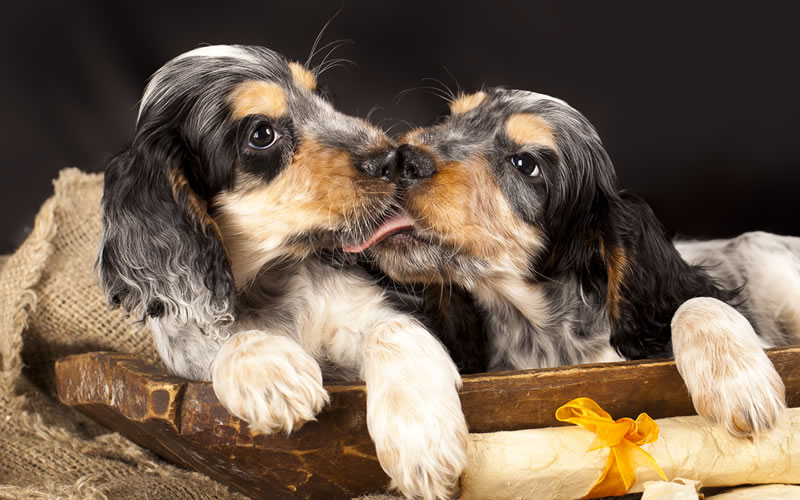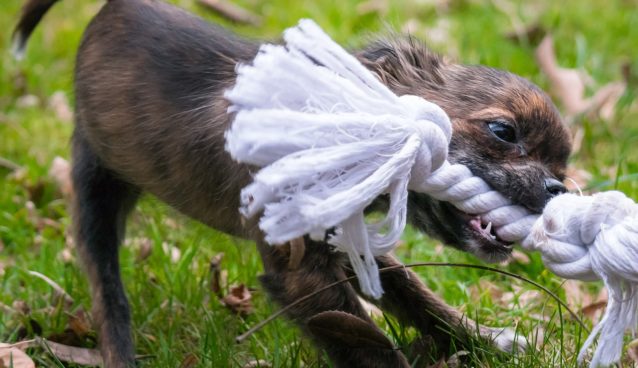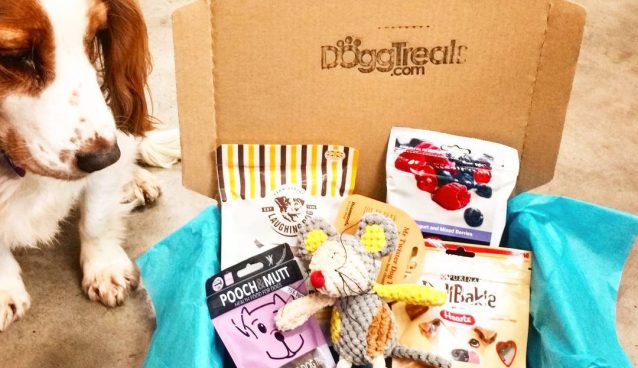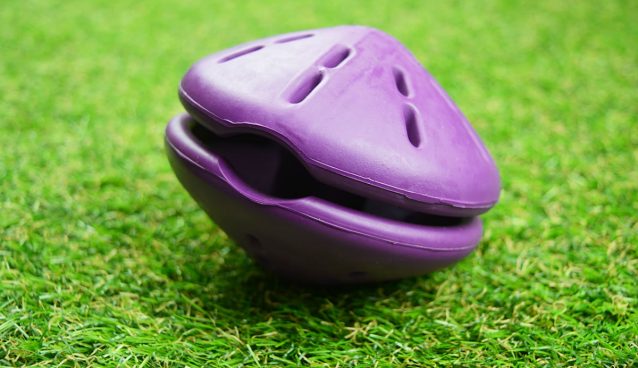New Dog/Puppy Check List – Part 2 – Choosing Your Puppy Breeder
How to choose a puppy breeder and choose the right puppy for you.
Owning a puppy (and a dog) is very rewarding, but first you want a healthy puppy from a responsible breeder. In Part 1, we looked at the checklist of things to consider before choosing your puppy. In this article, we will look at what to keep in mind when choosing a breeder and puppy. There are some obvious points to look out for (like puppy and litter health) but also some much overlooked, and very important checks to make.

You are buying a puppy, so you obviously love animals, and especially love cute little puppies! The trap we can fall into is choosing that one pup that we first see that just makes us say “Awww!” And all reasoning goes out the window! It’s easy to do. But STOP! That would be a huge mistake.
Make sure to run through the checklists below (and this series), and pick the right puppy, not just the one you think is cutest (I know, I know, that’s hard to do!) Keep reading:
1. Make a “New Puppy Checklist”, and Stick to it
Before even looking at puppies, make sure you have a list of what you want from your new friend, and what to look out for when visiting litters and choosing your puppy (we will run through these below). If you don’t make a list, you could easily forget some important points to check for when you have half a dozen cute fur-balls crawling all over you!
Be sure to make your list. This will be of things to look out for with the puppy, breeder, litter and environment; things to ask the breeder; and things to test.
2. Where to Buy From – Choosing a Breeder
It is very important that you only consider a puppy from a reputable breeder. There are a lot of types of breeders out there. Most have good intentions, and care for their animals. However, there are those out there that may be inexperienced, or even worse, don’t care and just want to make some money. You may be tempted to buy from a breeder that is the cheapest. But you may be saving a few pounds, but end up with an unhealthy (mentally and physically) puppy. This will not only cost more in the long run, but encourages the breeders with bad breeding habits.
Good dog breeders only breed from healthy parents with good temperaments. This means that the litters from these parents have a much higher chance of being a good family pet, one that you will enjoy. Be picky with your choosing a dog breeder.
If you are unsure where to start, some good places to start are asking a local vet about local breeders, asking the kennel club, view the current government regulations (lots of great advice here), , ask friends who have experience, and of course keep reading so you know exactly what to look out for after receiving recommendations.
3. Signs of a Reputable Dog Breeder
Some dog breeders are great breeders, some are extra great. We will list the main signs of reputable dog breeders that are a must, then other signs that are extra great, but not completely necessary.
Must’s
The breeder would never let a dog leave their home before the minimum age. The puppy should not leave it’s mum before 8 weeks old. Puppies that are separated from their mum before this can develop behavioural problems. Puppies, especially in the first 8 weeks, learn fast. During these 8 weeks, puppies learn a lot from their puppy mates about play, how to get on with each other, among other things. If the dog breeder would let a puppy go before this time, run the other way.
The dogs live inside, around the family. As mentioned above, puppies learn fast. Being kept outside or inside may not seem like a big deal. But it is. Puppies that are kept inside get to see a lot of new things, hear a lot of noises, get to interact more with people, and get to see more of a home environment whilst he/she is learning.
A puppy raised outside, in a shed, garage, basement etc may end up nervous of new things, new sounds and new people.
Being kept in the house not only shows that the breeders knows their stuff, it also shows they care. When choosing a breeder, pick one that keeps their puppies indoors. It is highly advantageous (although not necessary) if there are multiple people in the house, for example children, and other pets.
The living area is clean and well maintained. Ok, so you can’t be too house proud with a new litter about! But the home and area where the puppies are should be clean and looked after. This includes clean bedding and clean water.
The dogs (puppies and parents) are relaxed around you and other people. The puppies and the parents should be happy and comfortable around you and other people. This is a good sign the puppies have been well looked after and had lots of social contact with human.
The breeder makes sure the litter’s vaccinations are up to date. Vaccinations should be up to date. The puppies should also be de-wormed. Ask the breeder if they have had their treatment.
The breeder wants you to visit more than once. If the dog breeder questions why you want to visit again, this is a big sign the breeders either has something to hide, or doesn’t understand why visiting several time is a must, which is not a good sign from a breeder. You should want to, and should, visit several times while the puppy/puppies are growing and developing. You will want to see the puppies at different stages, and will probably want to bring a family member (or the whole family) to visit. The breeder should understand this.
You checked out the breeder, the breeder should check you out too. Some dog breeders are extremely picky with who they let their puppies go home with. And so they should. If the breeder doesn’t ask so much as if you have owned a dog before, you may want to reconsider the breeder. The breeder should be concerned about the welfare of their puppies, so should be asking you plenty of questions too. So don’t be offended if they want to know how experienced you are, where you live, if you have a garden, how much spare time you have for dog walks and more. Take it as a good sign!
You can see the puppies, along with the mother (and father). You should always be allowed to see the puppies with the mother. It is sometimes not possible to see the puppies with the father. The puppies will take a lot of the traits and personalities from the parents, so seeing the mother (and possibly the father) will give you a good idea of what the pup will be like – health and temperament wise – when older.
The parents should have been health checked by a vet. This is especially important for certain breeds, as some breeds suffer from genetic disorders. Do your research into the common health problem for the breed you are interested in, and ask to see documentation (from a vet) to prove the parents are healthy. A responsible breeder won’t breed a dog with health defects.
Other Things to Look For
Other things that are good signs:
The dogs have paperwork. If the parents are registered with the kennel club, and have paperwork to prove it, then you are much more likely to have a healthy puppy.
The dog parents take part in shows. If the puppies parents take part in shows, there is a high chance the breeders take good care about which dogs they breed to get the best offspring.
The breeder will insist in taking the puppy back if for some reason you cant look after him/her.
4. Questions to Ask the Breeder
Have you bred puppies before? Experience is good.
How many litters has the mother had before? The mother shouldn’t have had too many litters. The Kennel Club doesn’t accept further litters from a mother after the 4th litter.
How many litters does the mother have per year? No more than 1 litter in a year.
How old is the mother/father? The parents should be over 2 years old. This allows time for any possible health concerns to present them selves.
How did you choose the father/stud dog? A stud dog should be chosen for their good health and temperament.
Are you sure the mother and father aren’t related? If the mother and father are closely related, this can cause health issues and should definitely be avoided.
How many puppies have already been chosen by others? Ideally, you want to view all the puppies together from a young age. If all the puppies except 1 or two are spoken for, you may want to look else where. It’s important that you don’t just get a puppy because it was the only one left. Being able to pick the right one for you is important.
5. “Test” the Puppy You are Interested In
There are quite a few “tests” you can do while visiting the litter/puppy you are interested in. Don’t worry, by tests we don’t mean the lab experiment type! Depending on what kind of puppy (and adult dog) you want, there are certain things you can look out for, and even test.
These can give a good indication of puppy temperament. There are certain types of personalities, and some may suit you more than others. The dog breed type will give a very strong indication of temperament, so you will more than likely know what temperament you want before even choosing a breed, and before choosing a puppy. But remember, there are temperament differences between each puppy in a litter. So choosing a breed that is usually calm doesn’t necessarily mean all the puppies in that litter will be calm!
Take a look at the following list, and think about which you would prefer:
Extrovert. Some puppies are more outgoing than others. A bubbly puppy will usually need a lot more attention and stimulation.
Introvert. Some puppies are more reserved. A more reserved temperament may not be suitable if you have a busy lifestyle.
Playful. An energetic, playful pup may be good if you have a lot of time on your hands for exercise and training.
Bully. There is usually one puppy that doesn’t know when to stop. This may seem like a fun pup, but again, make sure you have lots of time on your hands for training.
Relaxed. A relaxed pup may be just what you are looking for. They may take up less time, and may be happy if you miss a walk or two. But they also may not be that eager or fast to learn. But a relaxed dog could be ideal if you have other pets or children.
Eager to please. A dog that wants to please you may be easier to train. They also may want more attention.
Shy. A shy dog may be good for you if you lead a quieter life style. However, lack of socialization can lead to an overly shy dog. Be sure you have time to regularly meet new people and new dogs in a relaxed and controlled environment.
Try to avoid the two ends of the spectrum. A puppy who is overly confident or overly shy may seem fun or cute, but may end up being a handful!
Discuss what kind of personality you want with the breeder. They should have a very good idea of each pups temperament.
Tests you can perform.
Be sure to check with the breeder first so they know what you are doing! Remember, puppies are very impressionable, and you want to make sure you don’t scare them. Ideally you want to perform these tests on individual puppies, not as a group. Also, just perform selected tests on one or two puppies you have narrowed your choice down to. Check out the test below:
The paper ball. Have a flat piece of paper ready. Get the pup’s attention. Screw up the paper so it makes some noise and throw it. How the puppy reacts can give a string indication of confidence. The puppy may be scared of the paper and not go near it; may be scared but still approach it to investigate; may not be scared at all and chase it. The middle “scared but still approach it” option is a good reaction. Being a bit unsure of something new shows the pup has some sense, but approaching the “possibly scary” item with caution shows they won’t just freak-out at everything and anything. Once they realise it isn’t scary, if they bring it back to you shows they have an strong ability to connect with humans, and wants to please you. A puppy that is to scared and won’t approach the paper could mean he/she will be scared of everything and anything, which may make it hard introducing new things and people.
Lie on their back. Roll the puppy onto their back. They may wriggle a little at first. But a pup they relaxes and doesn’t continue to wriggle shows they may be willing to submit to you easier once taken home, given training etc. A puppy that starts mouthing, wriggling, fighting, and being generally over the top, may end up being hard work.
Stand on a laundry basket. Stand the puppy on something tall and narrow (be careful not to let the puppy fall). This could be a laundry basket, the arm of a sofa, or for a smaller pup, you knee/leg. If the puppy seems overly scared, you can put the puppy back on the floor. One that seems a bit apprehensive but settles is one that may be a good candidate.
Hold in the air. Similar to the above two tests. Pick the puppy up from behind, holding underneath their front two leg/shoulders. The puppy may try to mouth/play/fight; may seem scared and panic; and may relax. A puppy that just relaxes and goes with it shows possible good confidence and submission.
Sudden noise or item. Similar to the paper experiment. A sudden noise like a clap, or a sudden item like an umbrella opening will produce different reactions from different puppies. You don’t want to scare them with too-loud-a-noise, it just needs to be something louder than the background noise.
Check out videos on YouTube of service (police dogs, guide dogs etc) puppies being chosen. They will perform some/all these tests to make sure they have a suitable puppy for training.
Again, I will just point out that you want to be careful not to freak the puppies out, hurt them, or anything similar. Any “tests” should be done with the breeders permission.
6. Watch the Puppies
Watch each puppy carefully. Think about the temperament you want. Watch how they play. Watch how they interact with the mother, the siblings. Are they constantly up to no good? Are they inquisitive? Are they constantly sleeping? Making several visits at different times of the day, and at different ages as they grow with give you some good all round knowledge of the pups.
7. Interact with the Puppies
Interact with each puppy. Check to see how the puppy reacts to you. Is he/she scared? Playful? Cuddly? Mouthy? All the puppies may display all of those qualities, but is the amount of each quality you will be interested in.
8. Check the Puppies Health
You will already have asked the breeders about the health of the puppies and parents. But be sure to look the puppies over yourself. What to look for will be fully covered in a different article. But a few things to look at are:
The puppy should have bright, aware eyes.
Eyes should not be crusty or look ill.
Coats should look healthy and shiny.
They rear-end should be clean.
Their ears, teeth and gums should be clean.
Test their hearing. With the puppy’s back to you, clap your hands and watch for a reaction.
Test their sight. Roll a ball, or move a toy in front of them, and check they can see it.
Does the puppy breath with ease, and no wheezing?
Check they are walking/running normally, without limping.









